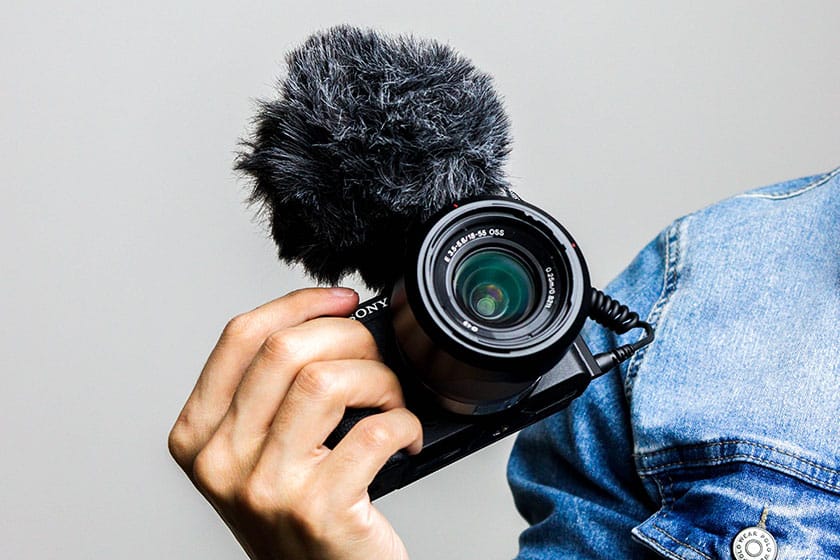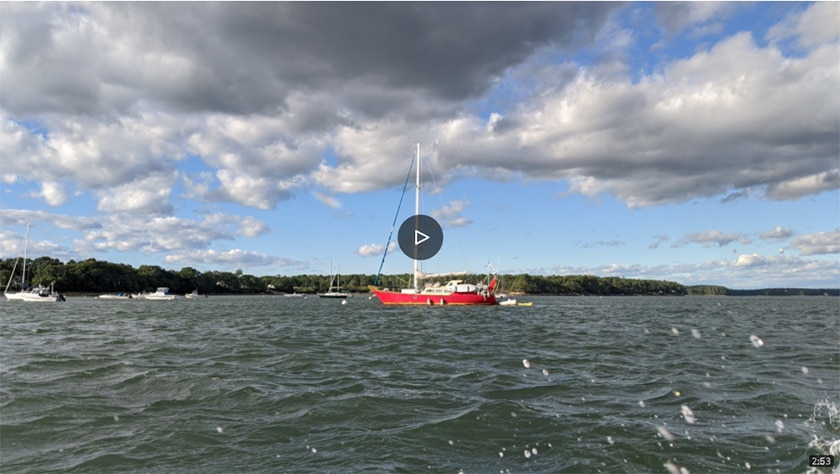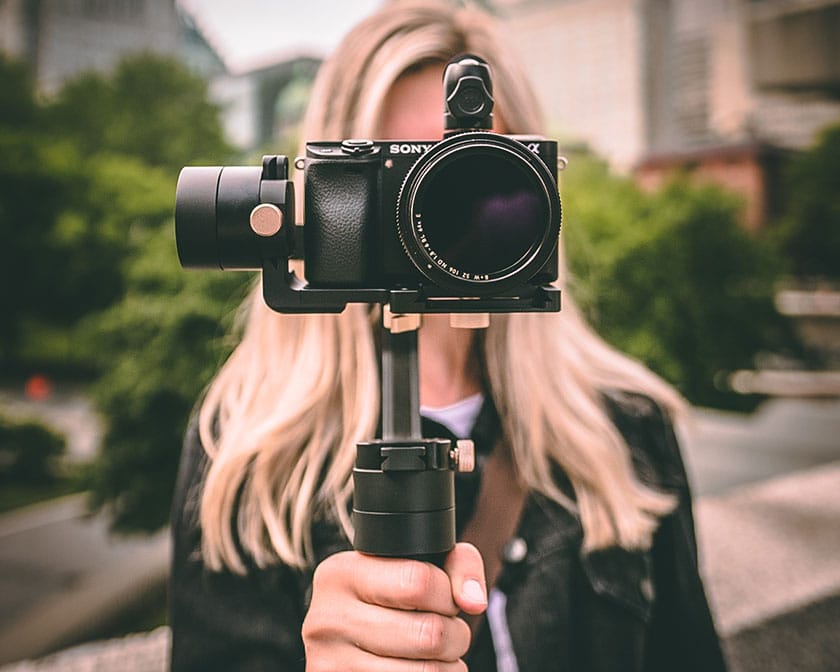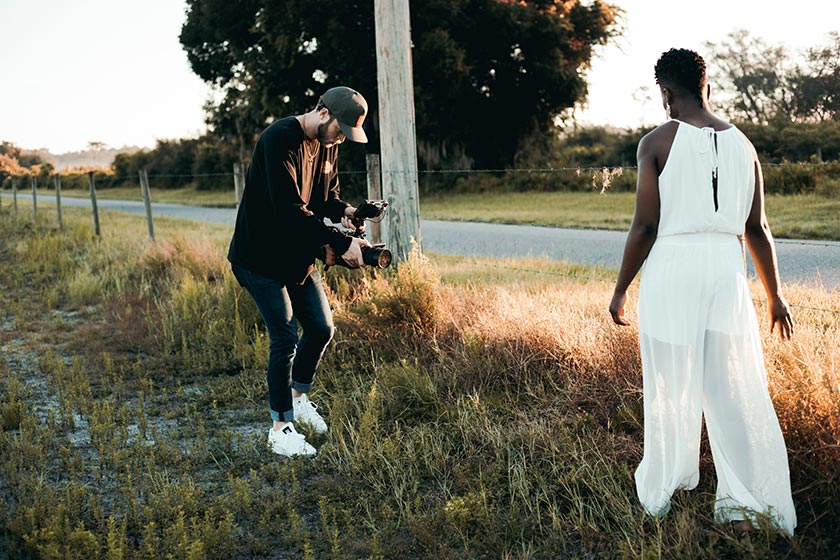Grow your photography business with videography.
February 4th, 2022
When considering ways of expanding your photography business, videography almost inevitably comes up. You’re already there. You’ve already scouted the location. There’s a lot that is similar, but what we don’t know often stops us from taking this avenue.
In today’s post we’re going to dispel some misconceptions, provide some actionable steps, and suggest a simplistic approach to add videography services to your existing photography business.
If you really want to do it, you’ll be a photographer and a videographer with new services and packages to offer.
Videography vs cinematography.
Before moving forward we want to make a clear distinction. Videography and cinematography are wholly different things. While they share many of the same principles, equipment and jargon, cinematography is concerned with filmmaking whereas videography is focused on capturing or documenting an event.
Generally speaking, videographers often work solo or with small crew and work directly with their clients. In contrast, cinematographers often have large crews and are collaborating with a broad production team which can include scores of people from varied disciplines.
The end product from cinematography is often a TV commercial, movie or show. The result of a videographer’s work is more likely to be a creative or documentary take on a wedding or other event.

Video compliments photography.
Video as a medium is clearly on the rise. Video continues to become more and more prevalent in our digital world. Every year we see a greater number of Facebook and Instagram video posts, YouTube videos and social media marketing that incorporates video. The amount of video being created and experienced is growing because technology can support it and people find enjoyment in it.
We all start somewhere! Above is the first video I made. I used my Canon 5d Mark iii and Sigma Art 35mm, edited in Davinci Resolve, with creative commons free licensed music – definitely far from “perfect.” Despite its flaws, it was a fun creative project that my family and I joyfully watch together, whenever we want to relive the memories of this day. In the midst of the stormy cold Maine winter seems like a good time…
There’s a business case to add video to just about any photography business. Easing into it, especially if you’re a solo-photographer, is a great way to go. Here are a few examples:
Wedding videography.
Video is becoming more and more prevalent for wedding photography business owners. In the past a wedding videographer was a separate expense line and vendor (in addition to the photographer). The video they’d deliver would be a start-to-finish video of the big day.
But, not every wedding needs a videography team. A wedding with a smaller budget might not even be able to afford a dedicated videographer. But, they’d likely still love to have a short, social-media friendly wedding video to share or a video “thank you” short to send to guests and gift givers.
While photographing a wedding, switching over to video and capturing short moments in time along the way could easily morph into a memorable video that accompanies one of your business’ photography packages (at an increased price). If you’re solo, you can’t be shooting two things at once. If this is holding you back, consider intermingling video clips and stills in your video.
Real estate videography.
If you’ve shopped for a home recently you’ve seen the trend: video accompanies many home listings today. High-quality, professional photographs were the bar for beautifying home listings. It’s not hard to envision a day in the not-so-distant future when video dominates home listings and still images take a backseat.
There are three types of video clips that are becoming common: overhead video shot with drones, ground-level exterior video and interior walk-throughs. Real estate makes a great subject, too. It doesn’t get fussy, you have plenty of time, and you need not worry about missing the moment.
The video goes beyond the listing sites, too. When home listings which include video are shared on social media, they often use the video as opposed to a still as the content of the post. If you’re already shooting real estate, adding video into the mix provides another opportunity for revenue and to make your business stand above the competition.
And… just about any other photography business.
Video makes great sense to expand any photography business. Family portraits, sports, travel, landscape, fashion – it’s easy to envision how video augments photography services regardless of the niche.

Photography vs videography: what you’ll need.
Adding videography to your existing photography business sounds daunting. Spending money to just test the waters isn’t a great business proposition either. Fortunately, when you break it down, there’s more in common with photography and videography than there is different.
We recommend a simple, practical approach as well as much of what you already own as possible. You might be happily surprised to learn that you have much of what you need to get started!
Equipment, a computer, and the ability to edit video.
If you’ve been doing photography professionally (i.e., getting paid for it), you likely have most of what you need to start shooting video, too.
A good dSLR and lens will do.
Both mirrorless cameras and dSLRs are great for shooting video. Unsure if your camera is up to the task? If it can shoot 1080p video at 30fps, you can get started. Many new dSLRs and mirrorless cameras are capable of shooting 4k and even higher.
Lenses? Again, the excellent image quality today’s professional camera lenses provide are just fine for getting into videography. Over time you’ll undoubtedly want to add more equipment. But, if the expense of investing in additional equipment is holding you back, don’t let it!
A small mic.
If you are planning to incorporate sound clips from your recorded video into the finished product, a small mic is a necessity for good sound. If you’re not sure, think about it this way; How many videos with wind, crackly sound, or static have you actually sat through in their entirety? If you’re like most people, that number is few to none. Thankfully, there are some inexpensive options out there that actually have good sound in the $40 to $60 range. Could you spend more? Always. Is it a must at this point? Absolutely not.
Lighting
Depending on the type of photography you do, lighting could present a challenge. If you find yourself needing a flash a good deal of the time, it won’t help when shooting video.
If you have lighting equipment that can help. But, if you’re just getting started, you can find a way to work around it. Shooting indoors? Find a well-lit space, or plan to shoot some clips outside.
Video editing software
Here’s our first additional expense. Or is it? Photo editing software isn’t going to do much for editing video. Clearly you need additional software. But, that might not mean shelling out money, certainly not when starting out.
Video Editing Tip: This is a good time to point out that most of the editing you’ll be doing will be selecting the best clips from your footage, and deciding how to put them together. Unlike photography, you don’t have a lot of latitude to adjust color and exposure; getting it right in-camera is more important than ever. If you are already a master at this, all the better!
Remember the first time you opened Photoshop to do post processing on an image? Learning any new software can be complex. And, introducing complex software into the creative process can have the unintended consequence of stopping a foray into videography before it gets started.
Luckily, there’s inexpensive, even free video editing software that is great for editing. We recommend new videographers start with iMovie, free on Apple computers. Many continue to use it for years, and some may find it’s all they really need. Both PC and Mac users can also use DaVinci Resolve and HitFilm Express 16. All three options export watermark-free 4k video.
Computer with a reasonable amount of storage.
You’ll need a computer capable of storing and editing video. Most software will come with minimum requirements. Whatever they are, the faster your processor is and the more hard drive space you have, the better.
In general, short video content is what you’re after when getting started. If you are in the market for a computer, the latest M1 MacBook or MacBook Pro makes a very capable video editing platform.
If you have a computer, but lack storage, consider getting an external drive, preferably one that connects via USB-C or another cable capable of fast transfer speeds. Since you’ll be mostly shooting short clips, even a fast, 1TB external SSD drive could get you started for less than $100.
What else do you need to shoot video?
There’s no shortage of equipment that would benefit one when shooting video. Tripods, gimbals, headphones, extra batteries… You get the point. But, for our purposes, you can get your feet wet with what’s outlined above.

How to add videography to your photography business
Okay. Equipment isn’t going to slow you down. So, how do you actually incorporate video into your business? A common theme you likely noticed if you’ve made it this far is to keep things simple. Here’s a step-by-step approach.
1. Get to know your camera’s video capabilities
Take some time and learn the basics of shooting video on your camera. There’s tutorials out there that can help you get most of the settings close enough that you can start experimenting.
2. Learn the basics
For shooting video you’ll need to embrace manual focus and learn a bit about video frame rates. Then, you’ll want to learn how to choose the right shutter speed and how aperture and ISO help balance the exposure.
You’ll be focusing manually as opposed to using autofocus, too. While autofocus is great for stills, it makes video look amateurish.
3. Shoot both wide and close-up video clips
When it comes time to edit, you’ll want clips shot from varying distances. Be sure to get in close as well as back off from time to time.
4. Don’t forget filler and b-roll
Video is storytelling. And, in any story, we don’t want to focus solely on our subject. Shoot clips of other things and you’ll be happy you did. Filler can be any number of things. If a video was of a newborn, examples of such short scenes might include the shadows created by a slowly moving mobile on a crib or welcome home signs placed outside the family’s home by friends.
When it’s time to sit down with a video editor and put everything together, these clips will add life and depth to your work.
5. Integrate sound and music
The microphone we spoke of earlier has captured audio as you shoot. It’s amazing how ambient sound and music can completely change the emotion a video evokes. Speaking of music, there are several sources of music and sound effects that you can use for free while getting your feet wet. Do a quick Internet search on ‘free music for video’ or ‘free sound effects for video’; there’s plenty of options to choose from!
6. Practice
The more that you practice the more you’ll learn and discover. Practice on friends, family and other subjects (yes, we mean your pets) at first. When you get more comfortable, ask a customer who has purchased a photography package if they’d be willing to let you shoot some video that you’ll share with them. Explain that it is something new you’re exploring, and that you won’t charge them extra.
As your confidence grows you’ll know when it’s time to offer videography services for all customers. If you get referrals before you’ve started charging, you’re ready!
7. Share your work as you learn
As you continue to hone your craft, share the video work you have done with friends and on social media. You will get feedback and people know you’re expanding your services.
8. Update your packages and pricing
When you’ve become comfortable enough that you know you should be charging for your video work, price it into a few packages or offer video as an add-on.
Update your website and promotional materials. And, of course, create a short to share on social media.
Keep learning
There is so much to learn about videography. As your skills evolve, you’ll notice aspects of your work you wish to improve. You can find plenty of tutorials and tips for free on blogs and on YouTube.
Online courses are also a great way to up your game while doing so at your own pace.


